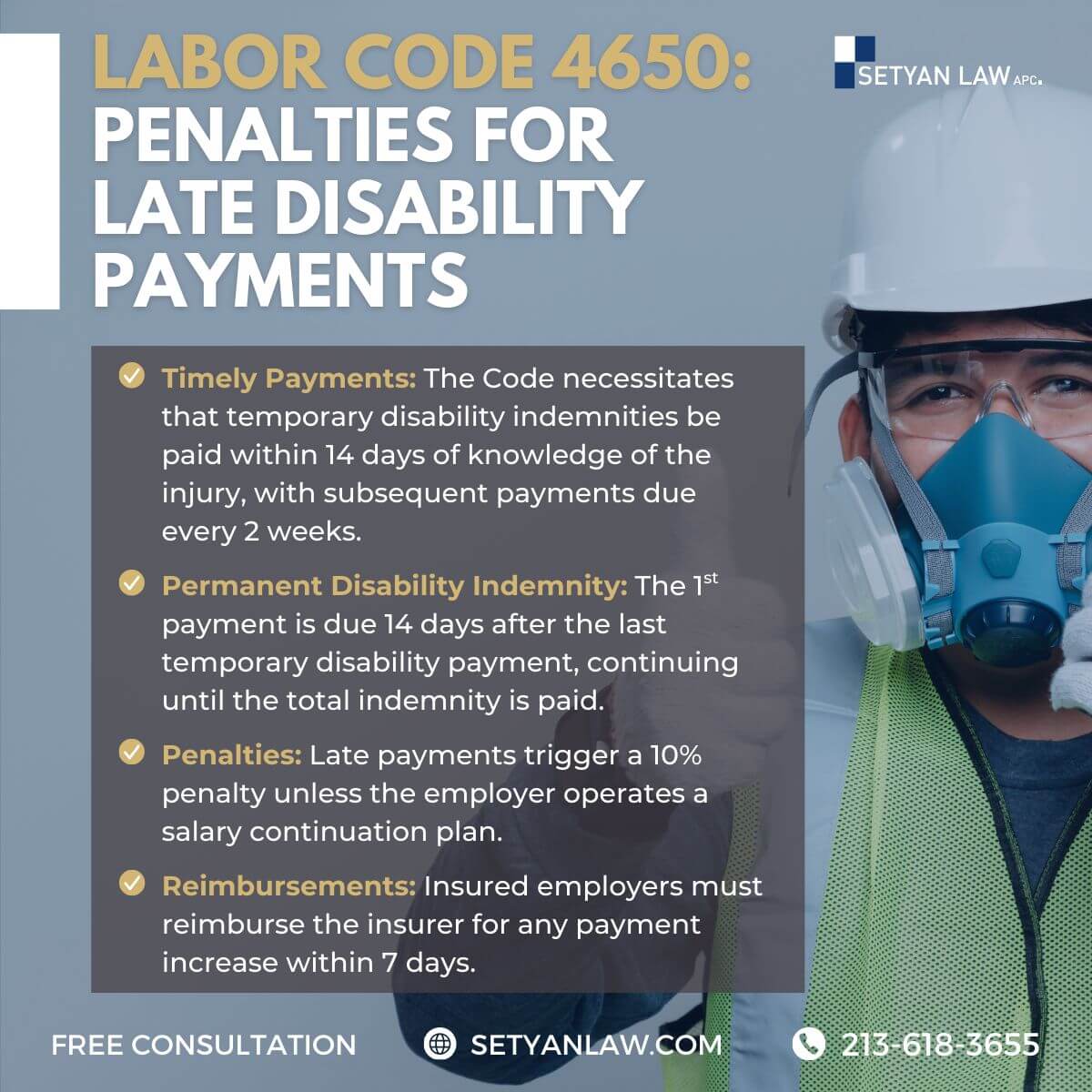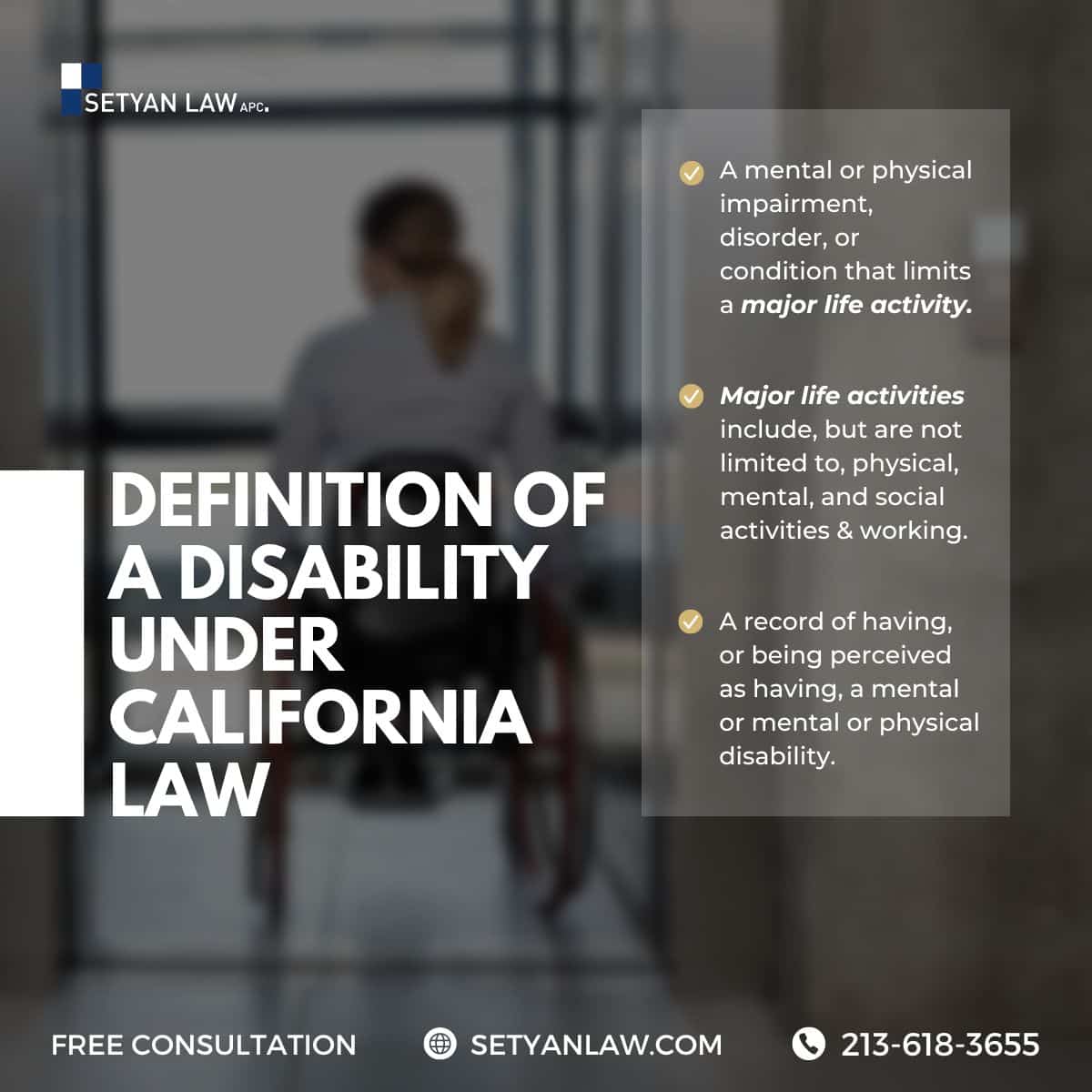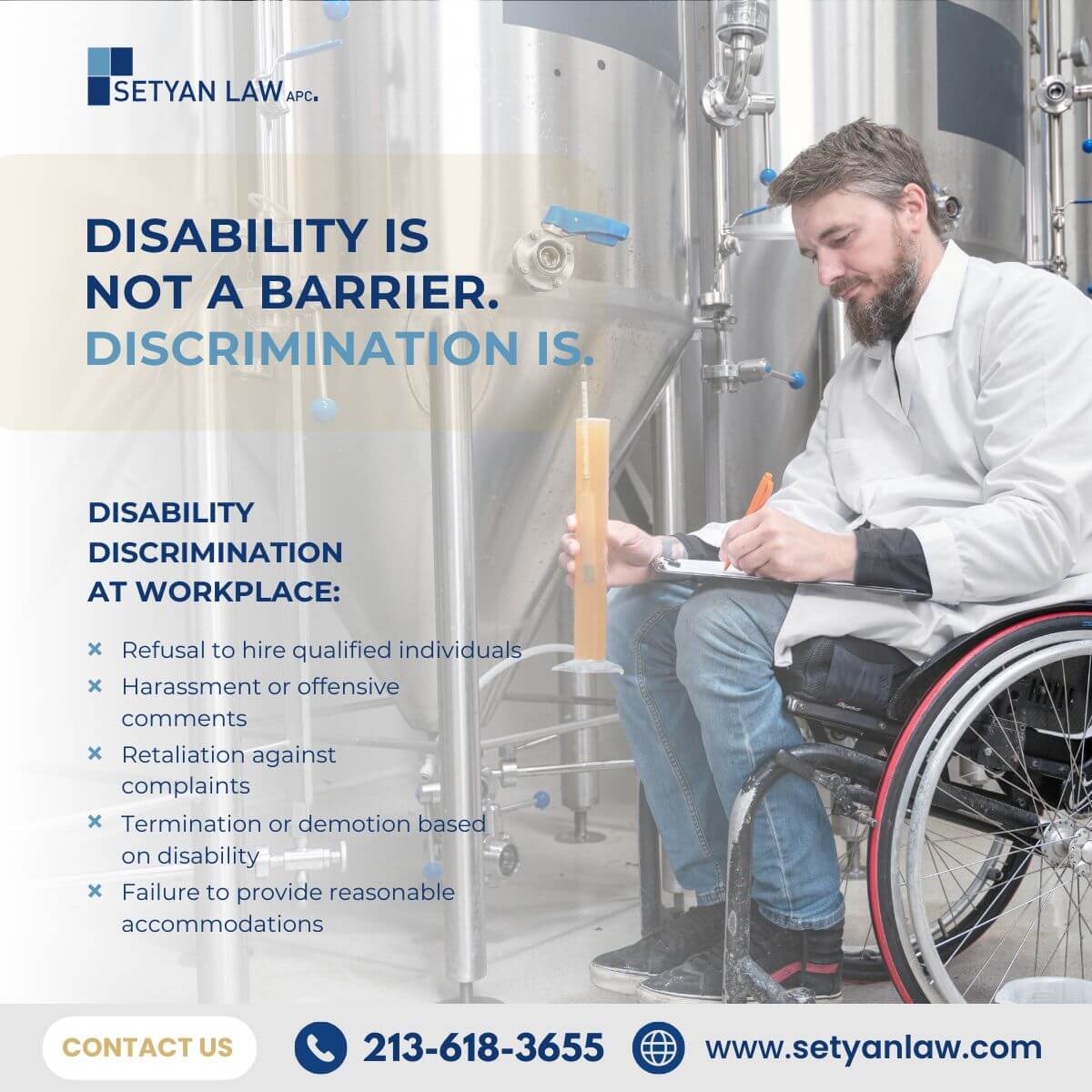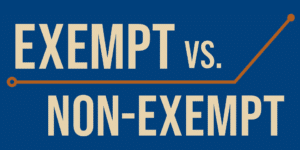Updated June 27, 2025
Keep Your Disability Benefits Working Part-Time
"Will I lose my disability if I work part-time?" This question keeps many Californians with disabilities from pursuing employment opportunities that could improve their financial situation and quality of life.
The fear of losing essential benefits often traps people in a cycle of dependency, when in fact, various programs and incentives exist specifically to help you work while maintaining your disability support.
While navigating disability benefits can feel overwhelming, the reality is that both federal and California state programs offer pathways to employment that won't immediately terminate your benefits. Depending on which program you receive benefits from—Social Security Disability Insurance (SSDI), Supplemental Security Income (SSI), or California State Disability Insurance (SDI)—the rules for part-time work vary significantly.
Fortunately, understanding these rules isn't as complicated as it might seem. This guide breaks down exactly how part-time employment affects your disability benefits in California, what income limits apply to each program, and the specific steps you need to take to maintain your eligibility while working.
Understanding Disability Programs in California
California offers three main disability benefit programs, each with distinct eligibility requirements, payment structures, and rules regarding part-time work. Understanding these differences is essential before attempting to balance employment with your benefits.
SSDI vs. SSI vs. SDI: Key differences
Social Security Disability Insurance (SSDI), Supplemental Security Income (SSI), and State Disability Insurance (SDI) serve different purposes and populations:
Funding Source and Purpose:
- SSDI is funded through payroll taxes and Social Security trust funds, functioning as an insurance program for workers who become disabled [1].
- SSI is funded through general federal tax revenues, designed as a needs-based program for those with limited income and resources [2].
- SDI is California's state program providing short-term benefits for up to 52 weeks [3].
Benefit Amounts:
SSDI payments are based on your lifetime average earnings covered by Social Security, with an average monthly payment in California of $1,524 [4]. For 2025, the maximum SSDI benefit reaches $3,636 per month [5].
By contrast, SSI has a maximum monthly federal benefit of $967 for individuals and $1,450 for couples in 2025 [6]. California supplements federal SSI payments, making the total benefit higher than in most states [7].
SDI provides 60-70% of your former wages, with a maximum weekly payment of $1,620 [3].
Healthcare Coverage:
- SSDI recipients qualify for Medicare after a 24-month waiting period [5].
- SSI recipients automatically qualify for Medi-Cal (California's Medicaid) [5].
- SDI does not include healthcare coverage.
Who qualifies for each program?
SSDI Eligibility:
To qualify for SSDI, you must:
- Have worked long enough and paid Social Security taxes
- Generally need 40 work credits, with 20 earned in the last 10 years (the "20/40 rule") [4]
- Have a medical condition that meets Social Security's definition of disability
- Be unable to work at the substantial gainful activity level [4]
SSI Eligibility:
For SSI qualification, you must:
- Have limited income (less than $943 per month in 2024) [4]
- Have limited resources (less than $2,000 for individuals, $3,000 for couples) [6]
- Be disabled, blind, or 65 or older [2]
SDI Eligibility:
California's SDI program requires you to:
- Have at least $300 in gross wages during your base period [8]
- Be losing wages due to disability [8]
- Be unable to perform your regular or customary work for at least eight days [4]
- Have received medical care within the first eight days of disability [4]
Additionally, you can receive both SSDI and SSI simultaneously (known as "concurrent benefits") if you meet the criteria for both programs [6].
How part-time work is treated under each
SSDI and Part-Time Work:
For SSDI recipients, the key factor is whether your work constitutes "substantial gainful activity" (SGA). In 2025, you can earn up to $1,620 monthly ($2,700 if you're blind) without affecting your benefits [1].
Moreover, SSDI offers:
- A Trial Work Period allowing you to test your ability to work for nine months while keeping full benefits [1]
- An Extended Period of Eligibility (36 months) after the trial period where benefits continue if earnings stay below SGA limits [1]
SSI and Part-Time Work:
SSI uses a different calculation for part-time earnings:
- The first $65 of monthly earnings is not counted
- After that, your SSI payment decreases by $1 for every $2 you earn [1]
- You remain better off financially by working, as your total income (earnings + reduced SSI) will be higher than SSI alone [1]
SDI and Part-Time Work:
With California's SDI:
- You can receive benefits while working part-time if you have a wage loss due to your disability [8]
- SDI calculates your pre-disability weekly earnings and subtracts your current part-time earnings [8]
- If your wage loss exceeds your weekly benefit amount, you receive full SDI benefits; otherwise, you receive the amount of your wage loss [8]
Therefore, the answer to "will I lose my disability if I work part-time" depends on which program provides your benefits and how much you earn.
How Part-Time Work Affects Your Benefits
Part-time employment affects each disability program differently, with specific rules determining whether your benefits continue, reduce, or stop. Understanding these rules helps you make informed decisions about returning to work without unexpectedly losing your support.
What is Substantial Gainful Activity (SGA)?
Substantial Gainful Activity represents a threshold amount of earnings that determines disability status for Social Security programs. Work is considered "substantial" when it involves significant physical or mental activities, and "gainful" when performed for pay or profit [9].
For 2025, the monthly SGA limits are:
These thresholds answer the question "will I lose my disability if I work part-time?" If your monthly earnings remain below these limits, you generally maintain eligibility for disability benefits. However, the SGA concept applies differently across programs:
- For SSDI: SGA determines both initial eligibility and ongoing benefit status
- For SSI: SGA only affects initial eligibility, not continuing benefits
- For California SDI: SGA limits don't apply; instead, a wage-loss calculation is used
The Social Security Administration evaluates not just your earnings but also considers the type of work and hours worked. For instance, even if you earn below $1,620 monthly but work 30 hours weekly, a disability examiner might determine you're capable of full-time work [5].
Trial Work Period and Extended Eligibility
For SSDI recipients, Social Security offers a safety net when you test your ability to work:
The Trial Work Period (TWP) allows you to work for 9 months (not necessarily consecutive) within a 60-month rolling period while receiving full benefits regardless of earnings [6]. In 2025, any month you earn over $1,160 counts as a trial work month [11].
Subsequently, you enter the 36-month Extended Period of Eligibility (EPE). Throughout this period, you receive benefits in any month your earnings fall below the SGA threshold [6]. The first time your earnings exceed SGA during EPE, Social Security pays benefits for that month plus two more months as a grace period [12].
If your earnings drop below SGA again during the 36-month period, benefits restart automatically without a new application [12]. Furthermore, if you stop working within five years because your condition worsens, you can request expedited reinstatement without filing a new application [6].
How SDI adjusts for part-time income
California's State Disability Insurance uses a different calculation altogether. Unlike federal programs, SDI focuses on wage loss rather than fixed income thresholds [13].
If you work part-time while receiving SDI:
- The program compares your current part-time earnings plus SDI benefits to your pre-disability weekly wages
- If this total is less than what you earned before disability, you receive your full SDI benefit [4]
- If the combined amount exceeds your previous earnings, your SDI benefit reduces accordingly [4]
For example, if you earned $1,000 weekly before disability and receive $700 in SDI benefits:
- Scenario 1: You earn $200 weekly from part-time work. Since $200 + $700 = $900 (less than $1,000), you keep your full SDI benefit [4]
- Scenario 2: You earn $600 weekly. Since $600 + $700 = $1,300 (exceeds $1,000), your SDI benefit reduces to $400, giving you a total of $1,000 [4]
Essentially, SDI ensures your combined income from benefits and part-time work doesn't exceed what you earned before disability. Remember to report all income changes promptly to avoid overpayments or penalties [13].
Work Incentives That Help You Keep Benefits
Beyond understanding how disability programs treat part-time work, several special incentives exist to help you maintain benefits while building financial independence. These programs address the question, "Will I lose my disability if I work part-time?" by creating pathways to employment with reduced risk.
Ticket to Work Program
The Ticket to Work program offers free, voluntary employment support for Social Security disability recipients aged 18-64 who want to work. This federal program connects you with authorized service providers who assist with your career development [6].
Key benefits include:
- Free vocational rehabilitation, training, and job search assistance
- Protection from medical Continuing Disability Reviews while participating and making progress
- Continued Medicare or Medicaid coverage while working
- The ability to test your work capacity without immediately losing benefits [14]
To participate, contact the Ticket to Work Help Line at 1-866-968-7842 (1-866-833-2967 TTY) or visit choosework.ssa.gov [6].
Plan to Achieve Self-Support (PASS)
PASS allows SSI recipients to set aside income or resources for expenses related to specific work goals without affecting benefit eligibility [15].
Through an approved PASS, you can save money for:
- Transportation to work
- Tuition, books, and educational supplies
- Assistive technology for employment
- Equipment and tools needed for your job
- Business startup costs [6]
For instance, if you receive SSDI but have too much income for SSI eligibility, you can set aside SSDI payments in a PASS to qualify for SSI while pursuing your work goal [15]. To apply, complete Form SSA-545-BK and submit a detailed plan outlining your work objective, necessary expenses, and timeline [15].
Impairment-Related Work Expenses (IRWEs)
IRWEs are costs you pay for items or services needed to work because of your disability. These expenses are deducted from your countable income when determining benefit eligibility [8].
To qualify as an IRWE, an expense must:
- Enable you to work
- Be necessary because of your disability
- Be paid by you (not reimbursed by insurance)
- Be reasonably priced [16]
Common IRWEs include specialized transportation, medical devices, attendant care, and certain medications. For example, if you earn $1,025 monthly and pay $250 for disability-related transportation to work, Social Security deducts that $250 from your countable income, potentially preserving your eligibility [8].
Notably, an item doesn't need to be exclusively for work to qualify—a hearing aid used both at work and home can count as an IRWE [16].
How to Report Your Work and Income
Proper reporting of your work and income is critical to maintaining your disability benefits. As someone who wonders "will I lose my disability if I work part-time," understanding reporting requirements can protect you from unexpected benefit loss.
When and how to notify SSA or EDD
For SSDI recipients, you must report immediately if you: start or stop work; experience changes in duties, hours, or pay; or begin paying disability-related work expenses [17]. SSI recipients must report earnings by the 10th day of the month following receipt [18].
California SDI beneficiaries must report any income on their first claim form when filing, along with any income received during the claim period [19]. Whenever you receive forms like the Disability Claim Continued Eligibility Questionnaire (DE 2593) or Claim for Continued Disability Benefits (DE 2500A), promptly complete and return them [19].
Reporting methods include:
- Phone: Call SSA at 1-800-772-1213 (TTY 1-800-325-0778)
- Mail/Fax: Send documents to your local office
- In-person: Visit your local Social Security office
- Online: Use my Social Security account or SDI Online
Using my Social Security or SDI Online
The my Social Security online portal allows SSDI recipients to report wages up to 2 years prior to the current date [2]. You can report a maximum of 104 pay periods for up to 5 employers per session [2].
When reporting online, have these items ready:
- Pay stubs showing gross amount paid
- Pay period start and end dates
- Pay dates
- Employer information (EIN if available) [7]
For SDI recipients, the online process involves logging into your SDI Online account and selecting "Continued Eligibility Questionnaire" or "Claim for Continued Benefits" in your inbox [19]. The system will email you when forms are available for completion.
What happens if you don't report correctly
Failing to report earnings can result in overpayments that you'll be required to repay [3]. Furthermore, penalties increase with repeated failures to report:
- First failure: Penalty equals one month's benefits (minimum $10)
- Second failure: Penalty equals two months' benefits
- Third or subsequent failure: Penalty equals three months' benefits [20]
In serious cases, you could face fraud charges, lose up to two years of benefits, or have your entire benefit withheld until overpayments are recouped [3].
Certainly, Social Security reviews recipients' earnings periodically, so unreported income will likely be discovered eventually [21]. To avoid these consequences, report any changes in work status within 10 days after the month the change occurs [3].
What to Do If You Lose or Risk Losing Benefits
Despite your best efforts to follow reporting requirements, there may come a time when your disability benefits are reduced or terminated. Fortunately, several options exist to help you regain your support.
Expedited Reinstatement explained
Expedited Reinstatement (EXR) allows former beneficiaries to restart benefits quickly without filing a new application. This option is available if your benefits ended because you returned to work and earned above the limits. To qualify, you must:
- Request reinstatement within 5 years of when your benefits ended
- Be unable to perform substantial gainful activity due to your original disability
- Have the same or related medical condition that initially qualified you
While Social Security reviews your request, you can receive provisional benefits for up to 6 months. Remarkably, even if your reinstatement is denied, you typically don't have to repay these provisional benefits [22]. For SSDI recipients who complete reinstatement, you'll receive a 24-month initial reinstatement period followed by a new trial work period and extended period of eligibility [23].
Appealing a denial or overpayment
For benefit denials or overpayment notices, a structured appeal process exists:
Reconsideration: Submit a request within 60 days of receiving the notice. For medical disability cessation, request benefit continuation within 10 days to keep receiving payments during the appeal [1].
Administrative Law Judge Hearing: If reconsideration is unsuccessful, request a hearing within 60 days [1].
Appeals Council: Still dissatisfied? Request a review within 60 days of the judge's decision [1].
Federal Court: As a final option, file a civil action within 60 days of the Appeals Council's decision [1].
For overpayments, you can alternatively request a waiver at any time by showing you weren't at fault and repayment would cause financial hardship [24].
Legal help and disability advocates
Several organizations provide specialized legal assistance:
Disability Rights California offers free legal advice on benefits issues. Contact their intake unit at 800-776-5746 or submit a request through their website [25]. Meanwhile, Bay Area Legal Aid (BayLegal) helps individuals appeal denials, terminations, and overpayments for SSI, SSDI, and related benefits [26].
These advocacy organizations can guide you through complex reinstatement and appeal processes, significantly improving your chances of success. Their expertise becomes particularly valuable when navigating the technical requirements for maintaining eligibility while working part-time.
Conclusion
Working part-time while receiving disability benefits certainly presents a viable option for many Californians. Throughout this guide, we've addressed the common concern: "Will I lose my disability if I work part-time?" The answer, as demonstrated, depends on which program provides your benefits and how much you earn.
First and foremost, understanding the fundamental differences between SSDI, SSI, and California SDI programs creates the foundation for making informed employment decisions. Each program applies distinct rules regarding income limits, with SSDI focusing on Substantial Gainful Activity thresholds, SSI reducing benefits gradually as income increases, and SDI calculating benefits based on wage loss.
Additionally, numerous work incentives exist specifically to support your transition to employment. The Ticket to Work program, Plan to Achieve Self-Support, and Impairment-Related Work Expenses all provide pathways to maintain critical benefits while building financial independence. These programs effectively remove barriers that might otherwise prevent you from pursuing meaningful employment opportunities.
Proper reporting stands as perhaps the most crucial aspect of maintaining your benefits while working. Failure to report changes accurately can result in overpayments, penalties, or even benefit termination. Therefore, familiarize yourself with reporting deadlines and utilize online portals like my Social Security or SDI Online to simplify this process.
Even if your benefits stop due to increased earnings, safety nets like Expedited Reinstatement remain available should your condition worsen. The appeal process also provides multiple opportunities to challenge incorrect decisions regarding your benefits.
Most importantly, remember that working part-time while receiving disability benefits often results in greater overall income and improved quality of life. Fear of losing benefits should not trap you in financial dependency when programs exist specifically to support your employment journey. Armed with this knowledge, you can confidently explore work opportunities that match your abilities while maintaining the support you need.
References
[1] – https://www.ssa.gov/ssi/text-appeals-ussi.htm
[2] – https://www.ssa.gov/faqs/en/questions/KA-01412.html
[3] – https://secondchancelawyer.com/social-security-disability-blog/reporting-income-changes-to-social-security-how-it-affects-your-disability-benefits/
[4] – https://ca.db101.org/ca/programs/income_support/sdi/program2a.htm
[5] – https://ssdisabilityaccess.com/services/disability-benefits-and-part-time-work/
[6] – https://www.ssa.gov/pubs/EN-05-10095.pdf
[7] – https://cohhio.org/wp-content/uploads/2020/10/Reportng-SSDI-SSI-Wages-Online-to-Social-Security1.pdf
[8] – https://www.ssa.gov/ssi/spotlights/spot-work-expenses.htm
[9] – https://www.ssa.gov/faqs/en/questions/KA-01843.html
[10] – https://www.ssa.gov/oact/cola/sga.html
[11] – https://www.ssa.gov/oact/cola/twp.html
[12] – https://choosework.ssa.gov/library/fact-sheet-trial-work-period-twp
[13] – https://edd.ca.gov/en/disability/Calculating_DI_Benefit_Payment_Amounts/
[14] – https://www.walkerdisability.law/blog/can-you-work-while-on-disability-in-california
[15] – https://www.ssa.gov/disabilityresearch/wi/pass.htm
[16] – https://choosework.ssa.gov/Assets/cw/files/FAQ-impairment-related-work-expenses.pdf
[17] – https://www.ssa.gov/disability/reporting/wages
[18] – https://www.ssa.gov/ssi/spotlights/spot-reporting-earnings.htm
[19] – https://edd.ca.gov/en/disability/Reporting_Your_Wages_DI/
[20] – https://www.ssa.gov/OP_Home/cfr20/404/404-0453.htm
[21] – https://www.croweshanahan.com/blog/2024/07/what-happens-if-you-dont-report-work-income-to-social-security/
[22] – https://www.ssa.gov/disabilityresearch/wi/exr.htm
[23] – https://secure.ssa.gov/poms.nsf/lnx/0413050001
[24] – https://www.ndpanda.org/sites/www/files/documents/What%20Are%20My%20Options%20with%20an%20SSI%20or%20SSDI%20Overpayment%20Factsheet.pdf
[25] – https://www.probono.net/oppsguide/organization.342367-Disability_Rights_California
[26] – https://baylegal.org/legal-areas/ssi-disability/
Call Setyan Law at (213)-618-3655 to schedule a free consultation.








